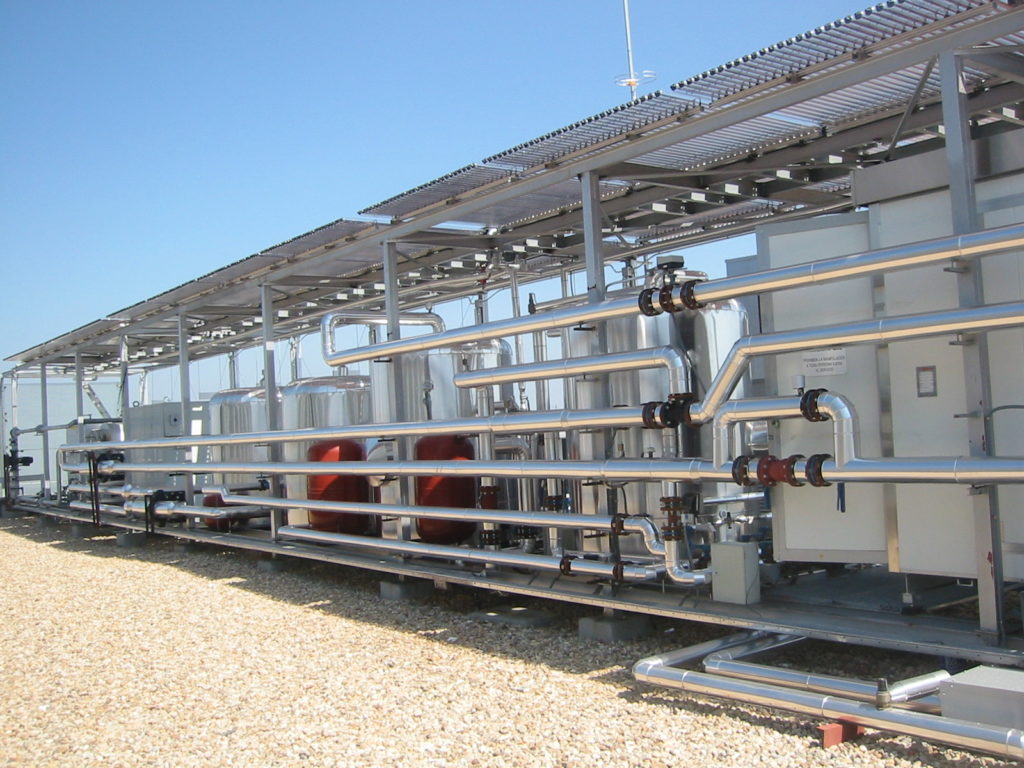Decarbonisation with Absorption Chillers vs Air Source Heat Pumps: UK Net Zero Strategies
As the UK accelerates toward its Net Zero 2050 target, commercial building HVAC systems must evolve. Two leading cooling technologies—absorption chillers and air source heat pumps (ASHPs)—offer distinct decarbonisation pathways.
Absorption Chillers: Harnessing Waste and Renewable Heat
Absorption chillers reduce grid electricity demand by using waste heat or renewable thermal sources like solar thermal. With water as a refrigerant, they have zero ozone depletion potential. A Madrid office using a solar-powered 105kW absorption chiller cut CO₂ emissions by 100 tonnes annually.

Air Source Heat Pumps: Greening with Electricity
ASHPs extract heat from the ambient air to provide heating and cooling. Their COP ranges from 3.0 to 5.0, significantly outperforming gas boilers. As the UK grid grows greener (projected 50% renewables by 2025), ASHPs’ environmental benefits rise. A commercial complex installing a 500kW ASHP reported 150 tonnes of annual CO₂ savings.
Choosing the Right Tech
- Absorption chillers excel where waste heat or renewable thermal energy (Found in sources such as solar, geothermal, and biomass, used for heating and cooling purposes) is available.
- ASHPs are best for buildings with high heating demand and access to renewable electricity. (Generated from sources that are naturally replenished and will not run out, like solar, wind, hydro, and geothermal power).
Vamtec’s Sustainable Solutions
Our bespoke absorption chillers and advanced controls optimise performance, helping you hit decarbonisation targets while maximising ROI.
Ready to implement sustainable cooling solutions? Download the full Vamtec Absorption Chiller Guide (1,500 words) for an in-depth look at decarbonisation with absorption chillers and air-source heat pumps.
Looking to meet Net Zero targets with innovative solutions? Speak to Vamtec today.
FAQ’s:
Q1: How do absorption chillers contribute to decarbonisation?
A: They reduce reliance on grid electricity by using waste or renewable heat and use water as a refrigerant, resulting in zero ozone depletion and lower CO₂ emissions.
Q2: What are air source heat pumps (ASHPs)?
A: ASHPs extract heat from ambient air to provide heating and cooling with high efficiency, powered by electricity that is increasingly renewable.
Q3: Which technology is better for meeting UK Net Zero targets?
A: It depends on the building’s energy sources; absorption chillers excel where waste heat is available, while ASHPs are optimal for buildings powered by renewable electricity.
Q4: Can absorption chillers and ASHPs be used together?
A: Yes, hybrid systems can maximise energy efficiency by leveraging waste heat and renewable electricity depending on seasonal demands.
Q5: How does the greening UK grid impact ASHP effectiveness?
A: As the UK grid incorporates more renewables, ASHPs’ carbon footprint decreases, enhancing their decarbonisation benefits.
